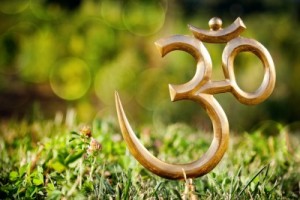Ayurveda: “The Science of Life”

Ayurveda is an age old traditional medical practice of India.
“Ayurveda means ‘Science of Life’. It deals with each and every aspect of human life. It’s first objective is to maintain the health and happiness while the next is to manage and restore the status of health and productive state of mind. Ayurveda offers wonderful tools for better life style. It gives equal importance to our body, mind and soul ; therefore works with holistic approach.
The Body Matrix
Life in Ayurveda is conceived as the union of body, senses, mind and soul. The living man is a conglomeration of three humours (Vata, Pitta &Kapha), seven basic tissues (Rasa, Rakta, Mansa, Meda, Asthi, Majja & Shukra) and the waste products(Mala) of the body such as faeces, urine and sweat. Thus the total body matrix comprises of the humours, the tissues and the waste products of the body. The growth and decay of this body matrix and its constituents revolve around food which gets processed into humours, tissues and wastes. Ingestion, digestion, absorption, assimilation and metabolism of food have an interplay in health and disease which are significantly affected by psychological mechanisms as well as by bio- fire(Agni).
Panchamahabhutas: The Five Basic Elements
According to Ayurveda all objects in the universe including human body are composed of five basic elements (Panchamahabhutas) namely, Akash (Ether), Vayu (Air), Agni (Fire), Jala (Water) and Prithvi (Earth). There is a balanced condensation of these elements in different proportions to suit the needs and requirements of different structures and functions of the body matrix and its parts. The growth and development of the body matrix depends on its nutrition, i.e. on food. The food, in turn, is composed of the above five elements, which replenish or nourish the like elements of the body after the action of bio-fire (Agni). The tissues of the body are the structural whereas humours are physiological entities, derived from different combinations and permutations of Panchamahabhutas.
Health and Sickness
Health or sickness depends on the presence or absence of a balanced state of the total body matrix including the balance between its different constituents. Both the intrinsic and extrinsic factors can cause disturbance in the natural equilibrium giving rise to disease. This loss of equilibrium can happen by dietary indiscrimination, undesirable habits and non-observance of rules of healthy living. Seasonal abnormalities, improper exercise or erratic application of sense organs and incompatible actions of the body and mind can also result in creating disturbance of the existing normal balance. The treatment consists of restoring the balance of disturbed body-mind matrix through regulating diet, correcting life-routine and behaviour, administration of drugs and resorting to preventive Panchkarma and Rasayana therapy.
Diagnostic Methodology
Ayuvedic approach of diagnosis is very unique and different from conventional medicine. An Ayurveda physician examines patient and disease both for confirming the diagnosis and status of disease.. The physician takes a careful note of the patient’s internal physiological characteristics and mental disposition. He also studies such other factors as the affected bodily tissues, humours, the site at which the disease is located, patient’s resistance and vitality, his daily routine, dietary habits, the gravity of clinical conditions, condition of digestion and details of personal, social, economic and environmental situation of the patient. The diagnosis also involves various other examinations, like- Pulse examination,: Urine examination, Tongue examination etc.
Preventive Approach Based on the Concepts of Aetio-Pathogenesis
Ayurveda has developed a very vivid analytical description of the stages and events that take place since the causative factors commence to operate till the final manifestation of disease. This gives this system an additional advantage of knowing that possible onset of disease much before the latent symptoms become apparent. This very much enhances the preventive role of this system of medicine by making it possible to take proper and effective steps in advance, to arrest further progress in pathogenesis or to take suitable therapeutic measures to curb the disease in its earliest stage of onset.
Treatment Approach
The basic therapeutic approach is, ‘that alone is the right treatment which makes for health and he alone is the best doctor who frees one from disease’. This sums up the principal objectives of Ayurveda, i.e. maintenance and promotion of health, prevention of disease and cure of sickness.
Treatment of the disease consists in avoiding causative factors responsible for disequilibrium of the body matrix or of any of its constituent parts through the use of Panchkarma procedures, medicines, suitable diet, activity and regimen for restoring the balance and strengthening the body mechanisms to prevent or minimize future occurrence of the disease.”
Source: Indian National Institute of Ayurveda
For assistance with your health through an Ayurvedic approach, browse our Merchant Directory seek help from one of our ayurvedic practitioners.






